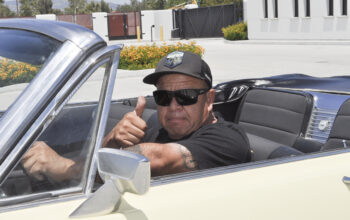
On a typical Monday, she prepares the furry patients for surgery, leading them to the O.R. that doubles as a classroom where Jennifer Adelini discusses the procedure in-depth, before having her students assist.
Adelini teaches several classes in the Registered Veterinary Technology (RVT) department, including the laboratory for “Clinical Procedure in Animal Care”, in which she spays and neuters cats and dogs.
In this lab, students are involved with the patient’s preparation and recovery process.
“They can take what they’re learning in lecture and apply it to a real life situation, and gain more confidence in taking care of those animals, while still being supervised and having a safety net,” Adelini said.
Adelini worked as a part-time instructor at Pierce for the past five years, and recently became a full-time professor.
For the past three years, she has been the surgeon and instructor of the clinical procedure class.
Angela Killips, instructional assistant, worked in the class before Adelini became the professor, and said that she enjoys working with her, despite worrying that she wouldn’t be able to adjust to a new surgeon.
“I was a little concerned with a new instructor coming in after I’d worked with a specific instructor for a lot of years in the surgery class,” Killips said. “But when she came in, we clicked like we’d been working together forever. The students love her. She’s really easy going, but very on the right mark with what students need to learn and patient safety, so it’s a good fit.”
Adelini said she decided she wanted to be a veterinarian when she was in college.
She went to the University of California, Davis, one of the 30 universities in the country to have an accredited veterinary school. However, that wasn’t the reason she chose to attend that campus, but once she was there and she heard about the program, she decided she wanted to pursue that career.
“I talked to our family vet about what he does and I was interested,” Adelini said. “I did not know when I was a little kid that I wanted to be a vet.”
When Adelini was young, her parents divorced. As a result, she lived mostly with her mom, who did not make a lot of money. Financial problems arose.
Although neither one of her parents attended a four-year university, it was always expected that she would.
“We were low-income,” Adelini said. “But education was always a priority. My parents always emphasized the need to do well in school.”
Adelini was the first in her family to graduate from college.
She said the transition to living at school was difficult because she didn’t know what to expect, because she didn’t really know anyone who had gone to college.
Regardless of having no previous exposure to a college lifestyle, Adelini adjusted and discovered what she wanted to do.
Early in her career, Adelini worked in private practices. Soon after, she began teaching.
“I was interested in finding different ways to use my education and move away from private practice, and one of the technicians that I worked with was a student here [at Pierce] and had heard that they were looking for an instructor for the anatomy lab,” Adelini said.
She began at Pierce by teaching one class for a few years. Then the department offered her a second class to teach. When a position opened up in January of this year for a full-time instructor, they offered it to Adelini.
Adelini said one of the hardest parts about being a teacher is not having all the answers, even though teachers are in a position where they sometimes think they should.
“Realizing that, while I know a lot about anatomy and veterinary medicine, nobody knows everything,” Adelini said. “It’s a lot of pressure knowing when to recognize your own limits. But that serves as an opportunity for me to keep learning, too. The students keep you on your toes and keep you challenged and that’s a good thing.”
Second-year Pierce student Skyler Rosso has had Adelini as a professor for two classes and said he had a really good experience with her.
“What I like most is that she’s a really good resource for anybody looking for a job in a veterinary industry, or anybody already in it, or just starting out,” Rosso said. “She’s a really, really good career resource and I like that a lot. I would definitely take her class again.”
According to Adelini, one of the biggest rewards she gets as a teacher is hearing from former students who are doing well.
“I’m proud to say over the last five years, I’ve had several of my veterinary students who are now in medical school, email me and tell me how great things are going, and it’s nice to hear that they found their experience in anatomy useful and helpful,” Adelini said.



